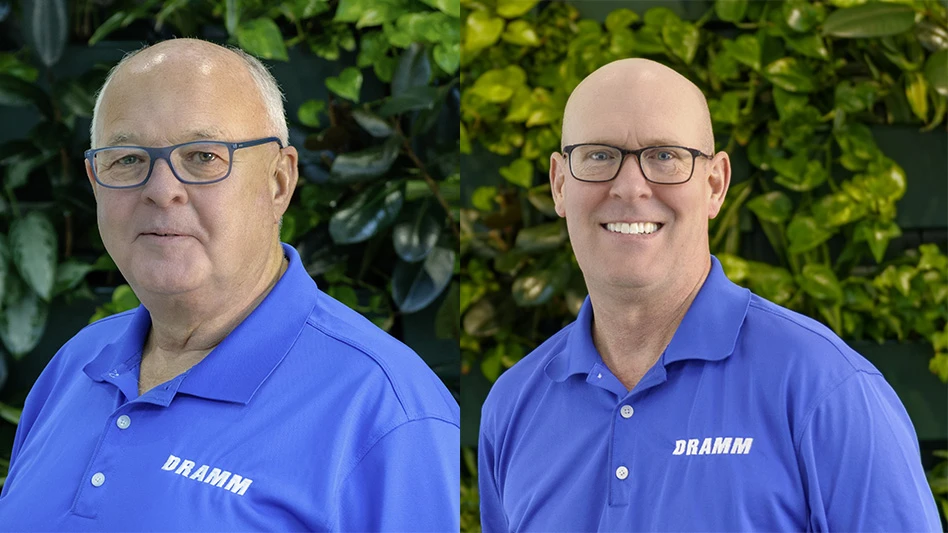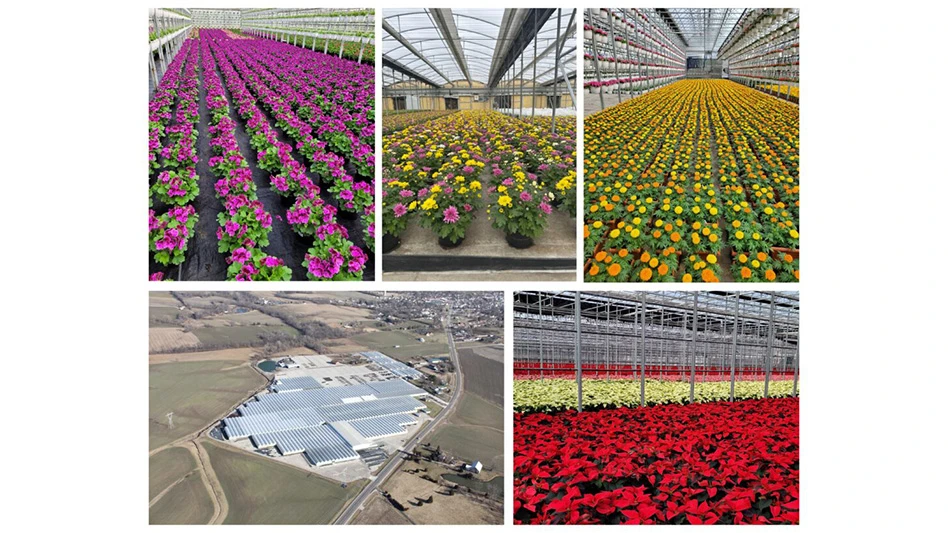
Automatic transplanters are great labor-savers if you grow a lot of plants. However, to be as efficient as possible, they need to be part of a system that includes media preparation, container filling, dibbling, covering, watering, tagging and transporting to the growing area.
Considerable progress has been made in improving the efficiency of automatic transplanters in the 30 years since they were first developed. There have been many improvements in the plug sizes they will handle, speed of operation, uniformity of placement and ease of changing from one tray configuration to another. Although more expensive, the new machines have given a big boost to the larger growers.
Machines are now available that will plant from 10,000 to more than 50,000 plants per hour.
The smallest machines can transplant enough flats to fill a 30-foot by 100-foot hoophouse in less than a day. These machines require a single operator plus the help needed to supply the pre-filled flats and move the transplanted ones to the greenhouse. The largest machines can fill more than a half-acre per day.
Transplanters require considerable capital investment, so determining your needs is an important first step. When selecting an automatic transplanter, consider the following:
- Most manufacturers have models with different outputs. The size of machine needed is usually based on the number of cells. Select a machine that matches your trays or pots.
- How quickly can the machine be changed to handle a different size container, different cell configuration or different plug size? Will the transplanter handle hanging baskets, patio pots and bowls? Will the machine plant multiple plugs in the same container?
- Select a machine with add-ons that will reduce labor and handle the plants that you grow. For example, AI vision plant selection is now available to identify and select good plug seedlings.
- Can the picking and planting depth be changed easily? Are the plugs damaged during handling? There are several designs for heads, including multiple needles and different styles of external grippers. Some machines incorporate a plug ejector to loosen it before the gripper grasps it.
- How many employees are required to operate the machine? The basic machines require an operator and two conveyors or employees to supply and take away the containers.
- What electrical power and compressed air supply is required? A separate air supply may be required to power the air cylinders that control movement of the arms and feed mechanisms. Servo motors are frequently used to control the gripper and planting operation.
- What type of emergency safety measures are included (automatic cut-outs for overload or jammed trays, low air pressure and depleted media supply)?
- Are there diagnostics included to identify a mechanical problem?
- What information will the transplanter computer system retain (number of containers filled, size of the container, cell configuration, variety of plant, etc.)? This information helps in planning future crops.
- How much training will be provided?
- Are replacement parts and upgrades readily available?

One of the greatest benefits of having an automatic transplanter is that you can refill growing areas quickly.
Manufacturers usually require that sample containers and plugs be provided for testing on a machine before delivery. This helps in designing for the right number of grippers and the position of plants in a multi-plant pot.
An automatic transplanter may require you to adapt your production system to handle different plug or tray sizes. You may also have to purchase or grow uniform plugs that are at the right stage of maturity with a well-developed top and root system.
With a new price of $20,000 to more than $100,000, automatic transplanters are generally economic for the medium- to large-sized grower. For example, if you are now using a transplanting conveyor with an employee hand-transplanting 50 flats per hour, at $14 per hour in wages, the cost per flat is about 28 cents. Installing a $30,000 automatic transplanter that has a production of 200 flats per hour per worker, the transplanting cost per flat drops to 7 cents. This 21-cent savings will have a basic payback of about 1.5 years if you do 100,000 flats year. You would need to have about 2.5 acres of growing space to handle this volume if you filled the greenhouse twice a year.
Automatic transplanters have reduced the drudgery and fatigue associated with getting the plugs into the flats. The increased production means fewer workers are required, and more space can be filled in one day.
This article appeared in the February 2025 issue of Greenhouse Management magazine under the headline "Lower planting costs with an automatic transplanter."

Explore the February 2025 Issue
Check out more from this issue and find your next story to read.
Latest from Greenhouse Management
- Terra Nova Nurseries introduces rust-free and disease-resistant heucherella
- John T. Nickel, founder of Greenleaf Nursery Co., passes away at 89
- Three tours offered at 2025 Farwest Show
- Garden Media Group announces sixth annual Women in Horticulture Week
- Star Roses and Plants announces National Knock Out Rose Day
- The Growth Industry Episode 4: How federal budget cuts are affecting horticulture nonprofits
- The thrips battle plan
- Pennsylvania Horticultural Society shares top gardening trends from 2025 Philadelphia Flower Show





